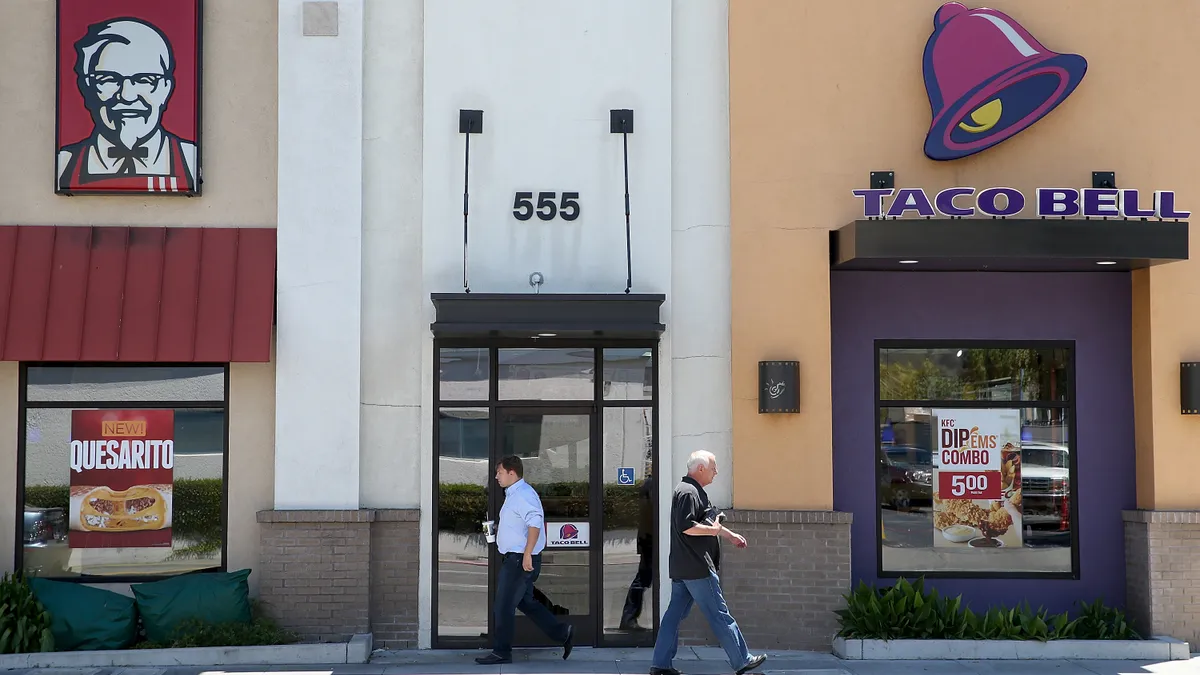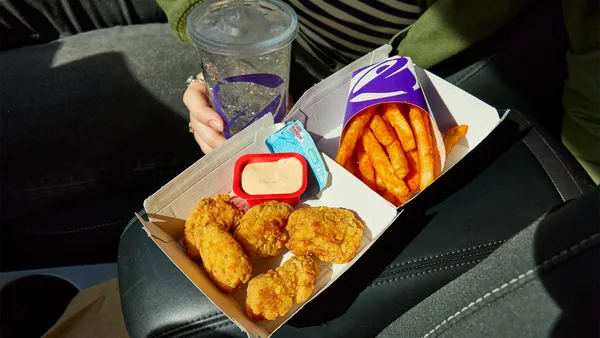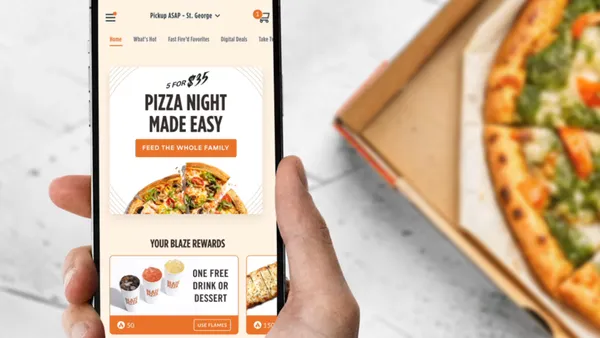Dive Brief:
- Taco Bell saw 4% same-store sales growth, while KFC’s same-store sales fell by 5% and its systemwide sales fell by 7% in the United States in Q3, according to Yum Brands’ most recent earnings release.
- Taco Bell’s value perception and digital strategy drove results, with digital sales up 30% year-over-year, Yum CEO David Gibbs said on the brand’s earnings call Monday.
- KFC’s LTOs and value menus underperformed as a result of industry competitiveness, Gibbs said. The divergence between the two brands indicates that the gap between chains that have fallen behind in 2024’s value perception competition and those that have pulled ahead is not narrowing.
Dive Insight:
Taco Bell has been Yum’s strongest performer in the U.S. for several quarters, with consistent same-store sales growth despite industry headwinds. The brand’s sales strength means it now accounts for 75% of Yum’s U.S. profits, and Gibbs said the chain has taken market share for several consecutive quarters.
Gibbs attributed the chain’s sales growth to a formula that includes value messaging, digital touchpoints and marketing and time-limited menu gimmicks, like the big Cheez It.
The brand is using its Cantina Chicken menu as a platform to launch menu item tests and LTOs, like its Chicken Al Pastor Street Chalupas, which debuted in Minneapolis last month.
Yum’s decision to let its Taco Bell operators opt out of the breakfast daypart does not seem to have hit the brand’s sales. Gibbs said the move gave Taco Bell greater marketing flexibility and allowed it to emphasize new menu items in other dayparts, like its Cravings Value Menu and Cantina Chicken lineup. However, the strategy is temporary.
“We intend to reintroduce breakfast in the future with a bolder, more distinctive Taco Bell approach,” Gibbs said.
While Taco Bell’s mix of menu innovation, premium items and strong value messaging has proven potent, Yum’s other flagship brands in the U.S. have struggled to gain traction. Pizza Hut’s same-store sales fell by 1%. But the 5% decline at KFC is a more severe, and more worrying, standout for Yum.
Same-store sales performance at KFC and Taco Bell U.S.
KFC’s sales declines in the U.S. were attributable to “a more intense competitive environment, particularly within the chicken QSR category,” said Gibbs. As smaller, regional chicken chains like Zaxbys and Raising Cane’s continue to grow — to say nothing of segment leader Chick-fil-A — KFC’s vulnerability to its U.S. competitors could increase.
Going forward, the brand will focus on strengthening its value proposition and on introducing new, appealing menu items, like original recipe chicken tenders, Gibbs said.
KFC introduced a $5 meal deal earlier this year and, in August, added several more variants to the value play. That deal is slated to run through the year’s end, but its utility for the chain is unclear: Both Q2 and Q3 saw same-store sales slide despite the presence of the offer.
The sales weakness at KFC and Pizza Hut has led to trouble for some of the chain’s operators. EYM, a multi-brand operator, closed dozens of units. Outside the U.S., KFC opened 685 locations worldwide — a large number for the chain. But its traffic in the Middle East and Southeast Asia has been negatively impacted by consumer reactions to the Israeli invasions of Gaza and Lebanon and ongoing military operations in the West Bank, Gibbs said.















